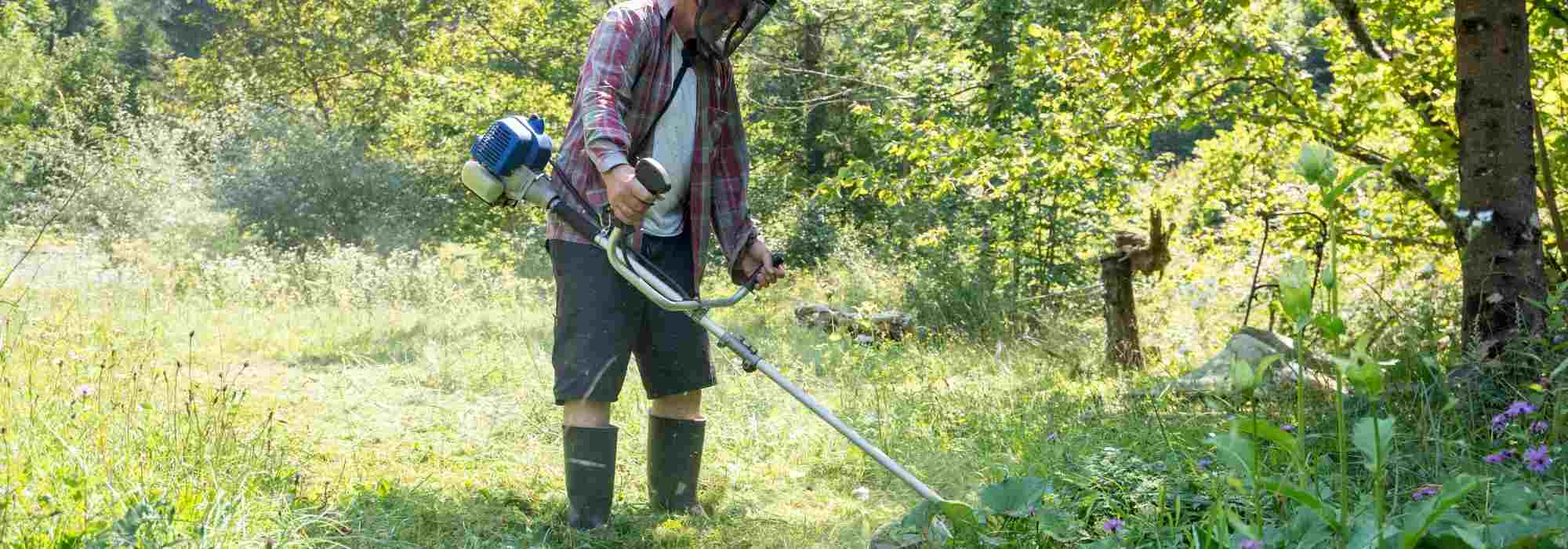
Which tools to use for clearing brush?
Let's roll up our sleeves!
Contents
Nature always reclaims its rights when given the chance. When brambles, nettles, tall wild grasses, and finally the first trees and bushes appear, you will need to clear the area if you wish to “clean” it up. Clearing involves removing undergrowth using hand tools or machines. To carry out this operation, you will need a whole range of gardening tools: billhook, scythe, machete…
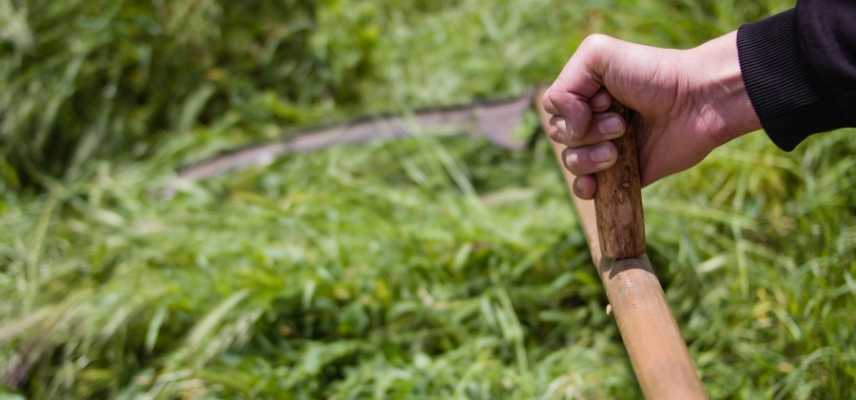 The ancestral gesture of clearing with a scythe
The ancestral gesture of clearing with a scythe
What does clearing brush mean?
Clearing is the action of removing “undergrowth”, which refers to small bushes or young woody shoots, from a piece of land.
This action can be carried out:
- by hand: using manual tools such as sickles or a scythe;
- with machines: a brush cutter.
Clearing is practiced along roads or waterways, in areas with a high risk of forest fires, or simply to “clean” a section of land, such as in the case of a garden that has been abandoned for a few years, for example.
Did you know?: clearing is sometimes practiced in natural areas managed by humans. It may seem paradoxical not to let Nature take its course in these places, but if nothing is done, the forest will reclaim the land. However, certain natural areas, known as open spaces, such as permanent meadows, dry lawns, heathland, reed beds, and turf moors… must be preserved for their rich biodiversity. Regular clearing is then necessary to maintain these open areas and prevent trees and bushes from growing. Increasingly, we are returning to the practice of grazing to manage such areas: animals (sheep, goats, hardy cattle…) are then released to manage these open or semi-open environments by regularly grazing the vegetation. Unfortunately, this practice is not always feasible (or at least more complicated), especially for wetter environments, such as reed beds or turf moors.
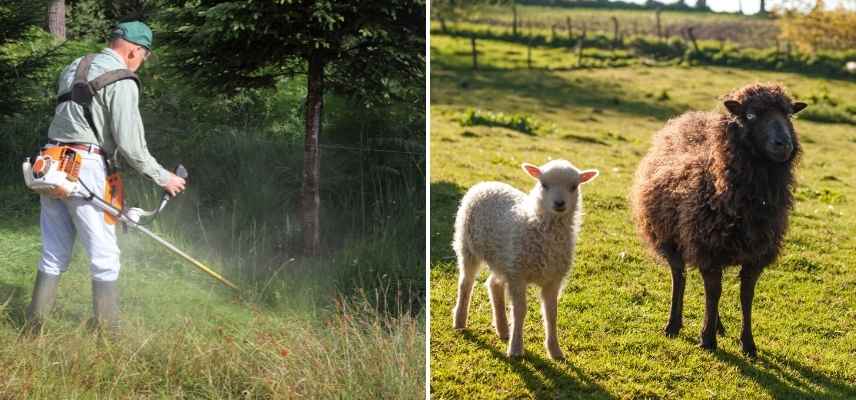 Mechanical clearing. On the right, Ouessant sheep, widely used in eco-grazing.</caption]
Mechanical clearing. On the right, Ouessant sheep, widely used in eco-grazing.</caption]
Read also
How to clear an area of brambles?Clearing with manual tools
If you wish to work with so-called manual tools (i.e. without a motor) for ethical, economic, ecological reasons, or simply because the area to be worked on is not very large, you can opt for these tools:
- the sickle: the sickle is the ultimate tool for clearing. The classic Italian sickle remains the most effective and durable option. This tool is ideal for pruning, maintaining undergrowth, clearing, clearing paths, or making bundles;
- the scythe: a scythe is an agricultural tool operated with two hands and typically used for mowing grasses. However, models with a shorter, wider, and thicker blade can be used to mow small woody plants and other brambles: this is known as a brush scythe. Such a tool is particularly quick when used correctly. Note that there are also mini scythes for clearing with a short handle: like this Bahco scythe. A mini one-handed scythe (sometimes incorrectly called a “sickle”), is also useful for cutting herbs, brambles, nettles, or very young woody plants;
- the hatchet: the garden hatchet (here a Polet hatchet) closely resembles the kitchen utensil of the same name. It has a short wooden handle to which a robust, more or less rectangular, and very sharp blade is attached. A hatchet is very handy for clearing, branch cutting, or splitting small logs;
- the machete: this tool resembles a kind of sharp sabre with a short handle. Widely used in tropical environments, the machete is extremely effective for cutting herbs, small diameter branches, and for making a path through brambles… The only downside is that one must know how to use it without injuring oneself. This is why a sickle is generally preferred for this type of use.
- Others: hatchets, pruning saws, shears, branch cutters… All these sharp tools can also be useful during clearing.
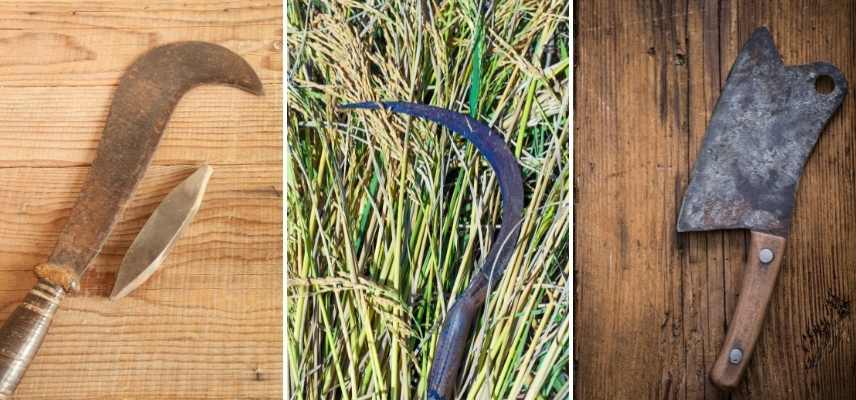
Sickle, mini-scythe, and hatchet
Clearing with machines
At times, the workload is too great to rely solely on manual tools. This is the case for large areas: agricultural land, natural zones, undergrowth… It is rarely essential in our gardens.
However, if this is indeed your situation, there are portable brush cutters with petrol engines, battery-operated ones, and…, although not recommended, electric ones via a power cable (in this case, a strimmer is preferable for light use). The head of the brush cutters can be fitted with a plastic line (for cutting herbs, nettles…), a chain, a cutting circular head (for small woody plants, branches, brambles…) or a specific head for a specific task (for example, triangular heads for tall herbs or reeds).
Devices can also be attached to agricultural machinery: flail mowers, rotary mowers, hedge trimmers… These machines are reserved for professionals.
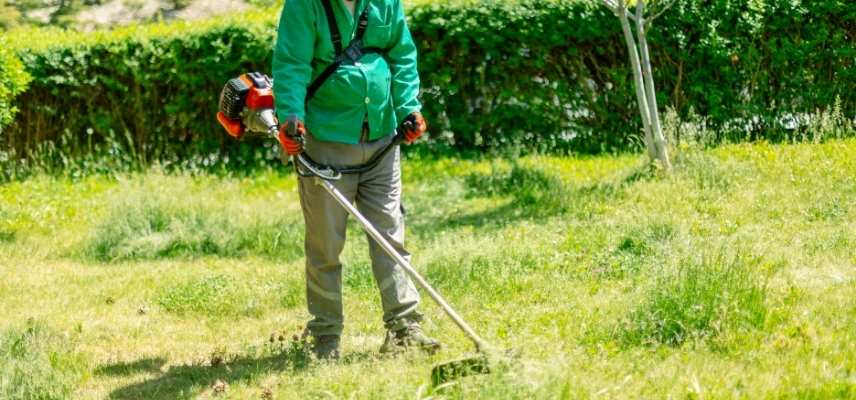
Petrol brush cutter
Read also
What is a billhook?Safety first!
No need to equip yourself with medieval armour to clear the garden (unless you’re working with my neighbour…), however, some precautions are wise to take:
- wear gloves to protect your hands and part of your forearms: thanks to a good pair of Rostaing clearing gloves;
- wear safety glasses: you may lose style, but you’ll gain protection from plant debris in your eyes.
- wear ear protection if you’re using a machine: earplugs, earmuffs…
- wear a helmet: not essential, of course, and mainly for machine use. Remember that everything eventually falls if you cut its base (damn gravity!). A young tree collapsing onto your face is somewhat amusing, but it can sometimes hurt a lot. So, be cautious!
- and finally, wear clothing: good trousers, long sleeves, and a sturdy pair of shoes will serve you better for clearing than shorts, a tank top, and flip-flops.
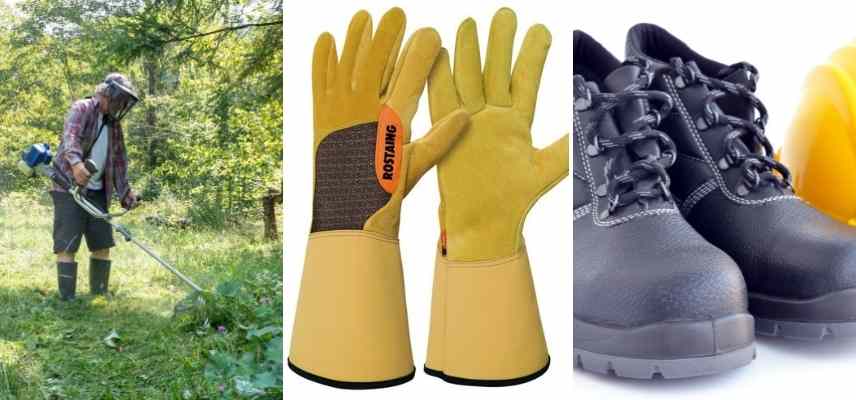
Helmet, thick gloves, protective shoes not to be overlooked during your clearing work
- Subscribe!
- Contents
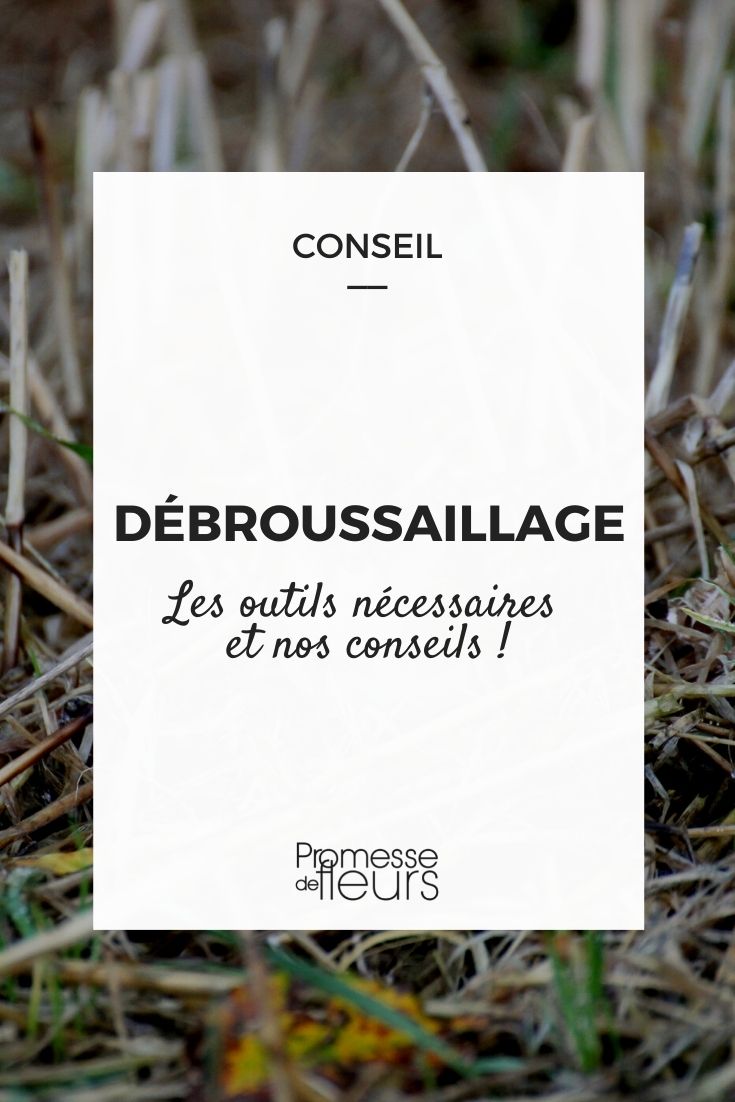































Comments